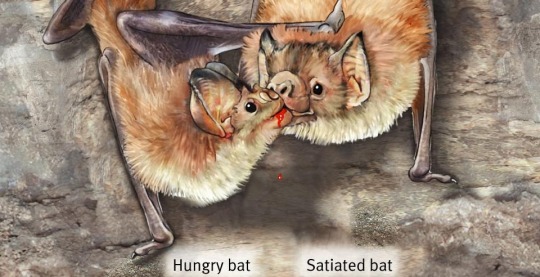#Biopsychology
Text
It's uquiz time baby! For context Clara's our psych teacher and we hate her x
34 notes
·
View notes
Text
Neuroplasticity: how the brain can heal itself - ABC listen
This is an absolutely fascinating read! If anyone is interested in brain plasticity/neuroplasticity, take a few minutes to see some of the incredibly ways the brain can heal itself from things like Parkinsons, chronic pain and more!
10 notes
·
View notes
Text
How our thinking is related to Alzheimer's disease
When I was in my third year of college, I was interested in Alzheimer's disease because of our subject, Biopsychology. Recently, I re-read a research study that captured my interest in Alzheimer's disease.
The study involves using a quasi-experimental study, particularly a case-control study. The article is an original article entitled Relation of Cognitive Activity to Risk of Developing Alzheimer's Disease by Wilson and his colleagues in 2007. The study involves cognitive activity and how it plays a role in the onset Alzheimer's disease. The study is relevant because it deals with the cognitive activity that includes brain games and its relation to the start of Alzheimer's disease.
The cognitive activity was assigned as the independent variable. The cognitive activity involves past and current brain-stimulating activities that play a central role in processing information, such as reading a newspaper, playing games like chess, or attending a play. In other words, activities that require the mind to be challenged with the basis of analysis and synthesis. The dependent variable is the onset of Alzheimer's disease (AD), which is assumed to have decreased risk if the at-risk one's cognitively engaging activities were performed. Alzheimer's disease is a chronic organic brain syndrome characterized by gradual loss of memory, a decline in intellectual ability, and personality deterioration. Several confounding variables were found: age, sex, education, and current and past socioeconomic status. Socioeconomic status was considered a confounding variable. It was said to affect engagement in cognitive activities such as attending a play and reading a book. Covariates were further identified and named current social activity and physical activity. The recent social activity involves the social interaction that the participants were occupied with, for example, having a conversation with peers and the like. In contrast, the physical activity consists of the body's optimal well-being and health, such as engaging in sports.
More than 700 participants were used from the Rush Memory and Aging Project, a longitudinal clinical-pathological study of risk factors for common chronic conditions that old age brought in 1997. The participants' mean age is 80.4 years. However, there were 931 participants in the baseline condition. Still, only 700 were participants in the length of the study since some were unable to complete the said study because of factors such as death. However, their brains were scanned for a neuropathologic examination to identify elements of the onset of AD.
At the start of the study, the participants were analyzed based on baseline conditions. They were identified if they had signs of AD, dementia, or mild cognitive impairment. They were given a questionnaire based on past and current mental activities. The questionnaire was composed of 30 items that consist of activities they are engaged with during earlier development stages and 9 items that consist of activities they are involved with at present. Annual check-up of cognitive function was followed-up and spread across 5 years. The yearly check-up consists of a battery of 20 cognitive tests that were done in approximately 1 hour. Covariates and confounding variables were also assessed based on a test that consists of 6 items through a rating scale. All of the data gathered were further analyzed.
The data were analyzed first through the basic associations of cognitive activity. Covariates may have affected the overall result of the study. However, all confounding variables were controlled, such as age, sex, and education. The association of AD with cognitive activity was determined through a Cox proportional hazards model series. Proportional hazards models are a class of survival models that relate the time that passes before some event occurs to one or more covariates associated with that quantity of time.
The data was presented through the provision of tables and visual representation of the data. The first table consisted of correlating cognitive activity measures with covariates and confounding variables. At the same time, they consequently provided a table regarding the characteristics of persons who did not develop AD and a sample graph of the Hazard of developing AD.
The results indicated that during the 5 years of observation, 90 persons out of more than 700 developed AD. People who grew a different kind of dementia were excluded from the incident analyses. A cognitively inactive individual was 2.6 times more likely to develop AD than a cognitively active individual. Frequency of past cognitively engaging activity since learning development was also regarded to reduce such risk. Its covariates, social and physical activity, have been related to the cognitive activity; however, when further analysis was done to eliminate such factors, mental activity's association with AD remains unchanged. The confounding factors were also examined, and the association remains unchanged.
Regarding clinical-pathological, the most direct evidence is that infrequent cognitive activity as a consequence of AD would be an association between mental activity and the pathology underlying the disease. The results were substantially unchanged in analyses, excluding those who gathered a lower score in the battery of tests. Further clinical-pathologic analyses showed that the composite measures of amyloid, tangles and Lewy bodies that determine the onset of AD, were not associated with level of cognitive activity at the study onset.
In conclusion, both current and past cognitive activity is said to be related to the onset of AD. The association of late-life cognitive activity with the maintenance of cognitive ability might reflect functional and structural changes in neural systems underlying cognitive functioning in response to environmental stimulation. However, there are significant setbacks wherein the study's length is shorter to see a clearer image of the effects of cognitive development. The measure of the past level of mental activity was based on the participants' own thoughts or memories and may have been a self-desirable bias.
4 notes
·
View notes
Text
A-Level Psychology Paper 2 today

gonna revise biopsych and research methods bc they kill me, good luck anyone else!
0 notes
Text

(source)
#yes it is addressed that these correlations may be due to minority stress rather than genetics#but also. i smoke weed because gay???#psychology#biopsychology
0 notes
Photo

During the winter break, we had experimented with our first workshop on Yoga for Athletic Kids. Here's a video on the same (22 min) long: This workshop was held for 5 days, 2 hour sessions each day covering * pranayama / breathwork, * bio-psychology of yoga, * yogic practices, * meditation and * visualization https://youtube.com/watch?v=7NlDE68r2aE #experience #visualization #psychology #yogi #biopsychology #yogabasic #yogaforkids (her: Sønderborg, Denmark) https://www.instagram.com/p/CpA4za7sEEo/?igshid=NGJjMDIxMWI=
0 notes
Text
Damn girl, you must be the MAOA and CDH13 genotype because you make me want to commit violent crime
1 note
·
View note
Text
Omg hiiiii! *regurgitates blood into your mouth because you had a bad hunt and we have a grooming relationship and we’re both girls and also vampire bats* uwu!!

#yeah sure I’ll post that#tw blood#tw gross#learned about them in biopsychology today#I can’t stop thinking about them they’re so cute
5K notes
·
View notes
Photo

Posi vibes for #biopsychology #candles #crystals #alter #officineuniversellebuly #glasshousecandles #hustlaspray #ritualswithlove https://www.instagram.com/p/CeQxXSxPefS/?igshid=NGJjMDIxMWI=
#biopsychology#candles#crystals#alter#officineuniversellebuly#glasshousecandles#hustlaspray#ritualswithlove
1 note
·
View note
Text

They said MS (Multiple Sclerosis) was psychosomatic because they couldn't find a biomarker. The patients, they hypothetisized, had trauma from not being cared enough in their childhood and now subconsciously paralyzed themselves with their unmet needs even to death (see e.g. Münch J. Psychosomatische Aspekte der multiplen Sklerose [Psychosomatic aspects of multiple sclerosis]. Ther Umsch. 1995 Feb;52(2):142-5. German. PMID: 7892676.). Then they invented a way to measure the demyelinisation and -boom- MS was no longer psychosomatic.
At least one Psychoanalyst (Casper G. Schmidt, 1984) insisted, that AIDS was psychosomatic. Patients, he said, became depressed because they internalized the homophobia of the society they lived in. That made them die in a "mass hysteria" event. He later died of AIDS himself (in 1994).
PCOS was considered a mental health issue of women.
Other diagnoses show, that you don't even need a lab test or medical imaging to accept, and treat, a physical illness without inventing psychological factors:
Asthma and Parkinson are two well known chronic illnesses without a biomarker. In both cases the clinical diagnosis (e.g. going by symptoms and excluding other probable health issues) is well established.
Doctors aren't gods. They are specialists with a quite narrow field of expertise. Sometimes they forget that fact. Especially when confronted with systemic illnesses like ME/CFS.
There is a plethora of physical abnormalities in ME/CFS that can be measured. Reduced anaerobic threshold, impaired oxygen uptake, mitochondrial damage, higher counts of GPCR autoantibodies, and much more.
Don't let doctors guilt trip and gaslight you.
#the biopsychological model is just cruel when used to explain physical chronic illness e.g.of the immune system.#idk how much denial has to go on in their heads. how much they ignore facts#like flat earthers#it would be comic#but it's just cruel.arrogant.ignorance#doctors get your ego under control challenge#me/cfs#cfs#chronic illness#immune system#twitter
180 notes
·
View notes
Note
omg it’s been a while since you’ve updated, so I hope you’ve been having some of the most relaxing few days ever rather than stressful ones. and if it’s the latter, I’m so sorry about that and I hope you get the rest and relaxation you need ❤️😊💖
!!! if i'm being very honest for the past week i had a lot of homemade brownies and did a lot of puzzles while i had very bad internet connection which somehow really felt like. super relaxing and made a lot of other stress go away so.....
thank you so so much for these well-wishes they mean so much 🥺💙 looking forward to what i can give you the next few weeks 💙
#asks#ok tbh somehow i relaxed but dont feel relaxed#and also somehow i wasnt so stressed but damn the past month ive been overwhelmed#brain is wild and i should have paid attention in the biopsychology class i took in college#for brain stuff#but i really really appreciated getting this and thank you so much for it <3#it literally just. this ask made me so like.#happy
25 notes
·
View notes
Text
"Cortical homunculus is a representation of the human body in the brain. Until recently, these homunculi have been male due to the lack of information on the female somatosensory cortex. However, a few female homunculi have been drawn1. In 2012, Gillian Einstein and her team coined the term hermunculus, which is a complete map of the human female somatosensory cortex2. Wright’s sculpture was guided by Einstein’s paper2."
Misogynists
3 notes
·
View notes
Text
paper 2 is tomorrow and let me tell y’all. i am SCARED THIS PAPER IS SO STINKY
#grace updates ✶#i love psychology but this one is goofy and dumb#what even is biopsychology lile#like*
2 notes
·
View notes
Text
ok ill make gifs all day tday
0 notes